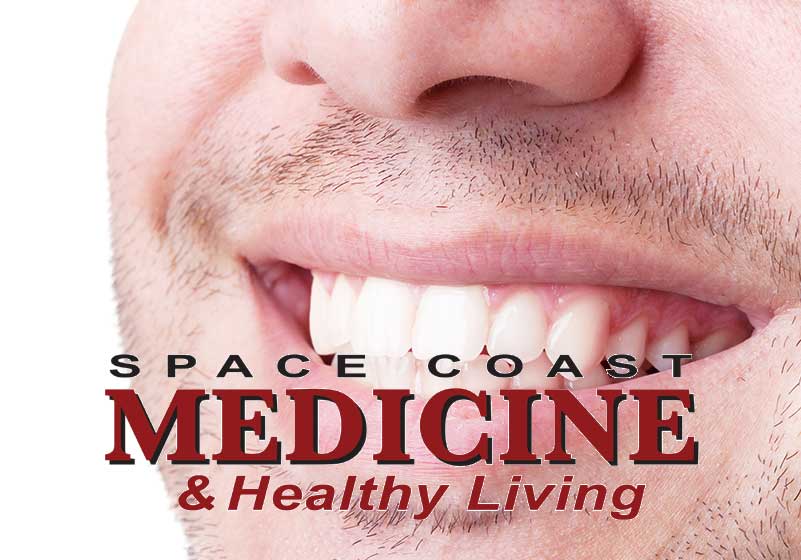


Published March/April 2010
AIR ABRASION is beneficial in all cavity preparations due to the superior bond that is created with the enamel and dentin surfaces. It generates no heat, sound, pressure or vibration. It reduces the need for anesthesia, particularly if the cavity is shallow.
You need a filling and you’re not exactly looking forward to it. What you dread most isn’t the pain; there’s local anesthesia that takes care of that. (But, you still have ‘the shot’ to deal with.) What you dread most is the drill, the dentist’s “handpiece.” Its high pitched whine sounds worse than a million mosquitoes on steroids, resurrecting frightening memories from the past. Your hands get sweaty, muscles tighten and persistent thoughts of escape jet across your mind.
If you haven’t been to the dentist in a while you may not be aware of drill-less dentistry. Air abrasion is the modern, minimally invasive way of cleaning out tooth decay. It works like a tiny sandblaster. Compressed helium and an abrasive powder blow the decay off your tooth.
The widespread use of fluoride over the past several decades has made the outer enamel of our teeth more resistant to decay. Unfortunately, it did nothing to prevent decay from seeping into the nooks and crannies that are part of the tooth structure. These areas, called pits and fissures, are smaller than a toothbrush bristle and impossible to keep clean, but they are large enough for bacteria to get in. This causes decay to start in the dentin, which is the softer part of the tooth, and it slowly blooms into a large cavity. The strong enamel makes these cavities very hard to detect by traditional diagnostic methods. The DIAGNOdent laser cavity detector is the most accurate way to “look” through the enamel and detect if caries exists.
Air abrasion in dentistry was introduced in the 1940s as an alternative to needle and drill cavity preparation. It was popular with patients but it faded out of use due to the lack of suitable bonding materials and it did not create the proper shape for the common silver amalgam mercury fillings used at that time. This has all changed with the introduction of safe, strong bonding agents and resin fillings. Air abrasion is beneficial in all cavity preparations due to the superior bond that is created with the enamel and dentin surfaces.
Patients enjoy the advantages of air abrasion. It generates no heat, sound, pressure or vibration. It reduces the need for anesthesia, particularly if the cavity is shallow. Air abrasion leaves more of the healthy tooth tissue alone, which keeps the tooth strong. It reduces the risk of microfracturing and chipping of the tooth, which can lead to more severe fractures necessitating the need for larger restorations such as crowns.
Patients also benefit from the fact that the dentist can treat multiple sites quickly and easily in a single visit and there is often no anesthesia required. It is not totally painless. There can be some sensitivity but it is usually minor.
Air abrasion is a conservative, less traumatic alternative to the high speed drill. It works like a mini sand blaster and it sprays away the decay. During the procedure the patient wears protective eyeglasses and a rubber dam is often placed around the tooth to be worked on. A fine stream of medical grade aluminum oxide particles is aimed at the decayed portion of the tooth. They are propelled toward the tooth surface by compressed helium gas, which runs through a precise dental handpiece. The particles of decay and sand are suctioned away. Most conventional air abrasion units use compressed air but the helium has been found to cut much faster and create much less discomfort to the sensitive dentin.
Air abrasion can also remove some old composite restorations. It can prepare a tooth surface for bonding or sealants and remove superficial stains and tooth discolorations. Dental pit and fissure sealants placed after air abrasion are much less likely to chip, fracture or fail. There is also no chance that beginning decay will be left undiagnosed. Air abrasion is useful in other aspects of dentistry. It creates the most optimal bonding surface for many of the restorations placed in the mouth, like crowns bridges and veneers.
Minimally Invasive Dentistry is the art and science of preserving the maximum amount of tooth structure in any restorative procedure. The stronger the tooth, the less likely are future problems and the less chance for post op sensitivity.
